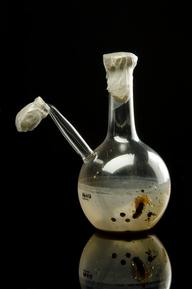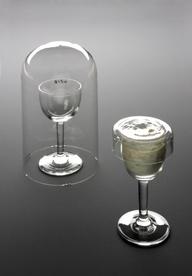







Davidson staining apparatus, for staining blood film preparations on cover slips, designed in Kings College Medical School, London, 1951
Staining is a technique used in the preparation of microscope slides to make the structure of the tissue and cells clearer. They are often stained different colours to highlight different parts of the sample. This machine automatically stains slides, saving time and labour for laboratory technicians. It produces slides of a consistent high quality and can produce 120 cover slips an hour. Each of the twelve arms is positioned over the different stains. The samples in cover slips are placed in containers and attached to each arm and then dyed. The arms are then rotated anti-clockwise and moved to the next dye. All the user has to do is load the samples and later remove them after they have passed through all twelve dyes.
The device was invented in 1951 by William M Davidson and his colleagues while they were working at the Clinical Pathology Department and Physics Laboratory at King's College Hospital and Medical School, London.
Details
- Category:
- Microbiology
- Object Number:
- 1981-1309
- Materials:
- case, steel and case, aluminium
- Measurements:
-
overall: 270 mm x 407 mm x 431 mm,
- type:
- staining apparatus
- credit:
- Institute of Biomedical Science



